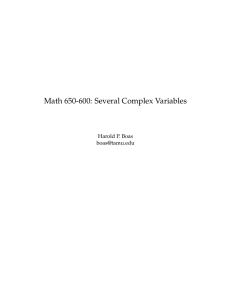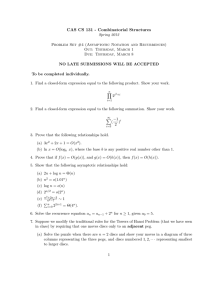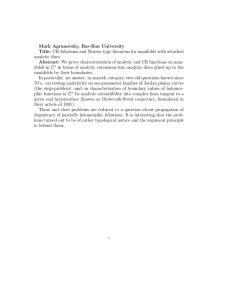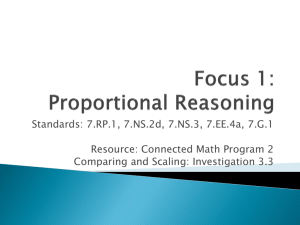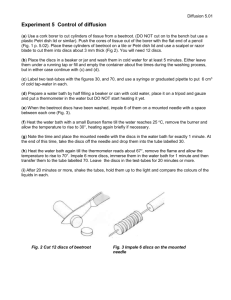Math 650-600: Several Complex Variables Harold P. Boas
advertisement
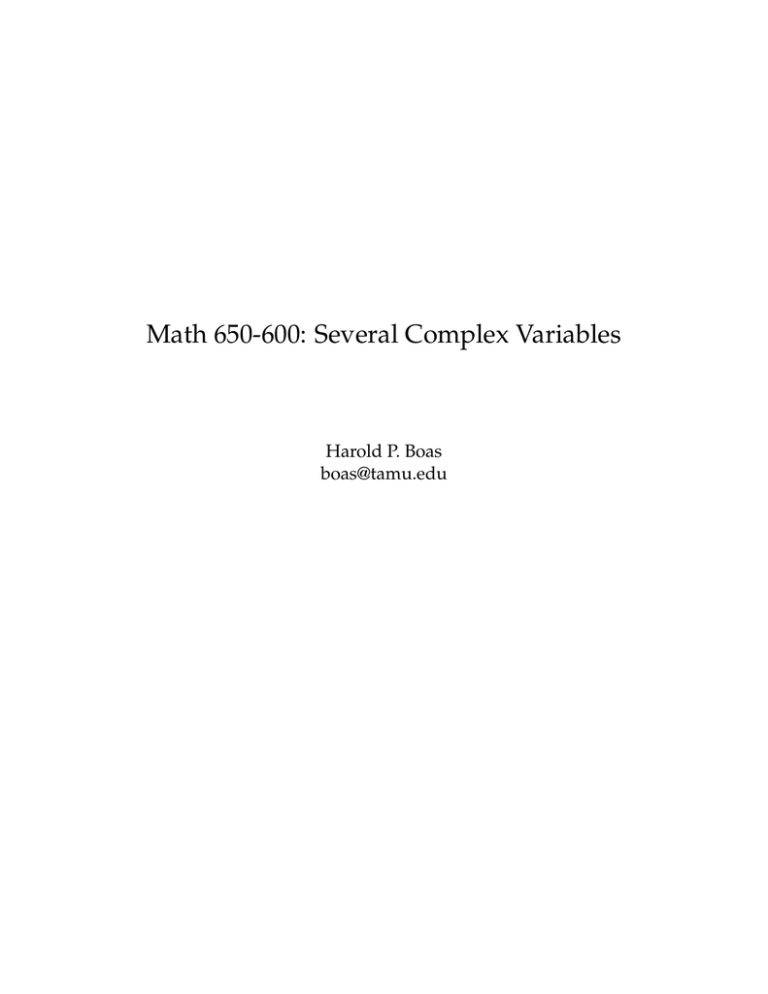
Math 650-600: Several Complex Variables
Harold P. Boas
boas@tamu.edu
Exercises
1. Verify that if u is a plurisubharmonic function of class C 2 on a domain Ω, and if F : G → Ω
is a holomorphic mapping, then u ◦ F is a plurisubharmonic function on G.
The domains G and Ω may be in spaces of different dimensions.
2. By convolving with a mollifier, show that if u is an arbitrary plurisubharmonic function (not
necessarily smooth), then u is the limit of a decreasing sequence of smooth plurisubharmonic
functions.
More precisely, if u lives on Ω, then there is an exhaustion of Ω by nested subdomains Ω j , and
there is a smooth plurisubharmonic function u j on Ω j such that the sequence u j ↓ u.
Math 650-600
March 24, 2005 — slide #2
More on the continuity principle
Example. (µ, λ) 7→ (µ, 12 (1 + |µ|)λ) is a family of analytic discs in λ parametrized by µ (where
|µ| < 1 and |λ| ≤ 1). The boundaries of the discs are contained in the “skewered bidisc”
{ (z1 , z2 ) : |z1 | < 1, 0 < |z2 | < 1 }, but the discs are not wholly contained in that domain.
Continuity principle, version I: If a family of analytic discs is contained in Ω, and if the union
of the boundaries of the discs is a relatively compact subset of Ω , then so is the union of the
discs. (This is the version of the Kontinuitätssatz stated last time.)
Continuity principle, version II: If {Dt }t∈[0,1] is a continuous family of analytic discs in C n , if
the boundaries of the discs are contained in Ω, and if D0 ⊂ Ω, then Dt ⊂ Ω for every t.
Version I implies version II by connectedness of [0, 1].
Math 650-600
March 24, 2005 — slide #3
Pending theorem on pseudoconvexity
The following properties of a domain Ω in C n are equivalent.
1. Ω is convex with respect to plurisubharmonic functions.
2. z 7→ − log dist(z, bΩ) is plurisubharmonic.
3. A continuous plurisubharmonic exhaustion function exists.
These equivalent properties are called pseudoconvexity.
The Levi problem is to prove that pseudoconvexity is equivalent to holomorphic convexity (to
be done later).
Meanwhile, we still need to prove that (1) ⇒ (2), which we will accomplish using analytic discs
and the continuity principle.
Math 650-600
March 24, 2005 — slide #4
Reduction of the problem
We need to show that for every point a in Ω and every direction b, the function − log dist(a +
bλ, bΩ) is a subharmonic function of the single complex variable λ.
When c is a unit vector, let d c (z) denote the distance from z to bΩ along the complex direction c:
namely, dc (z) = sup{ r : z + cλ ∈ Ω whenever |λ| ≤ r }.
Since − log dist(z, bΩ) = supc (− log dc (z)), it suffices to show that − log d c (a + bλ) is subharmonic for an arbitrary c.
Math 650-600
March 24, 2005 — slide #5
